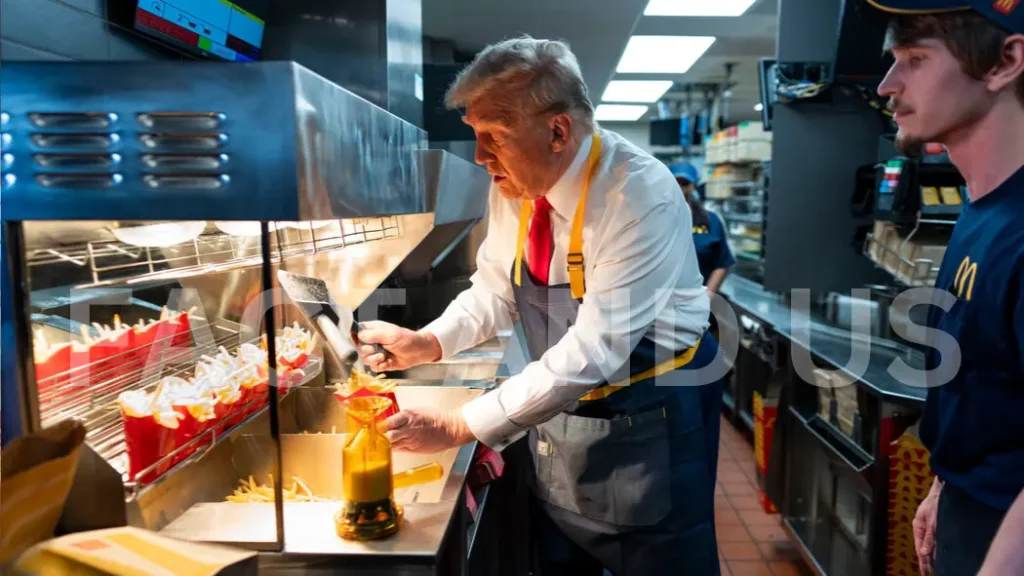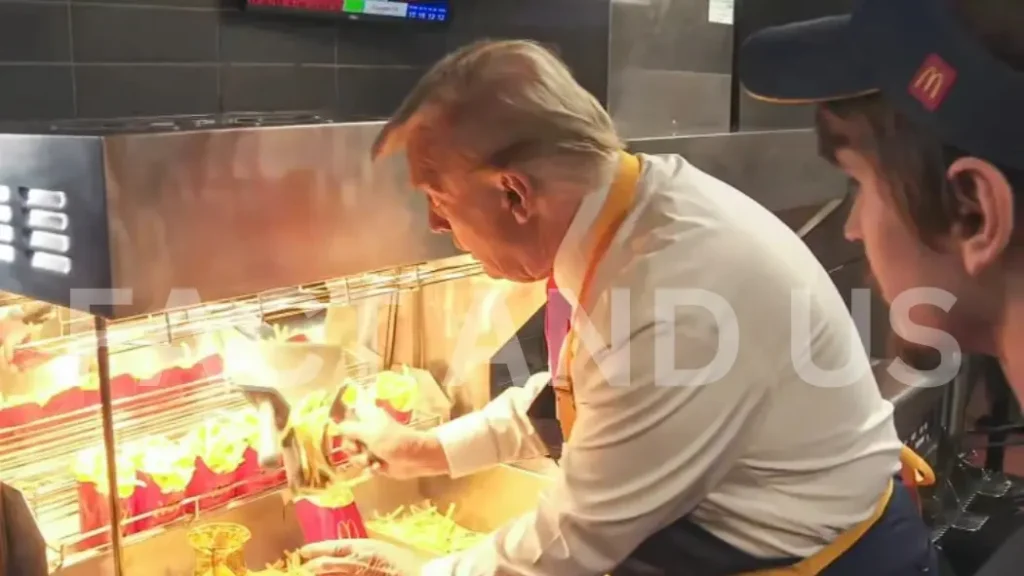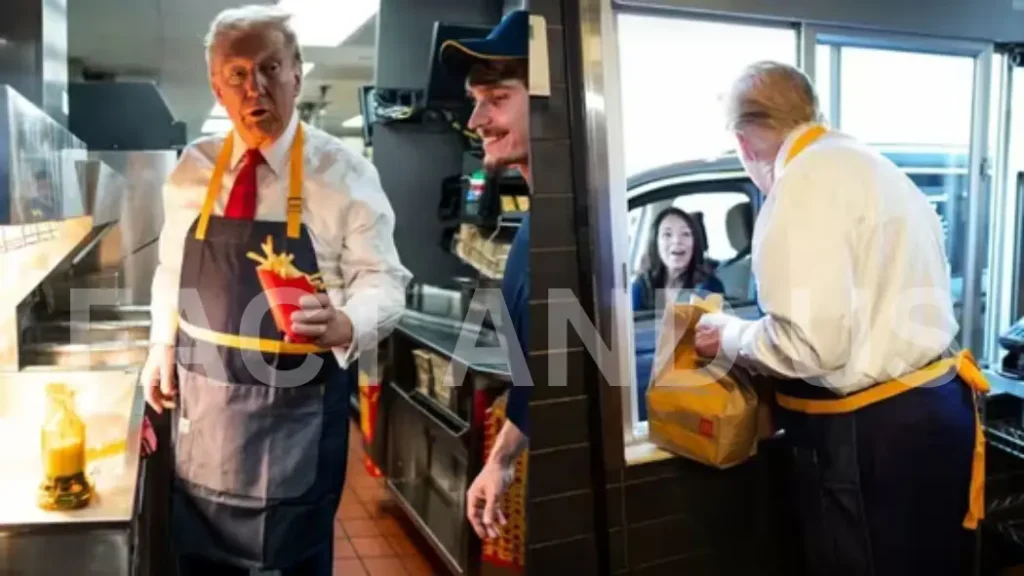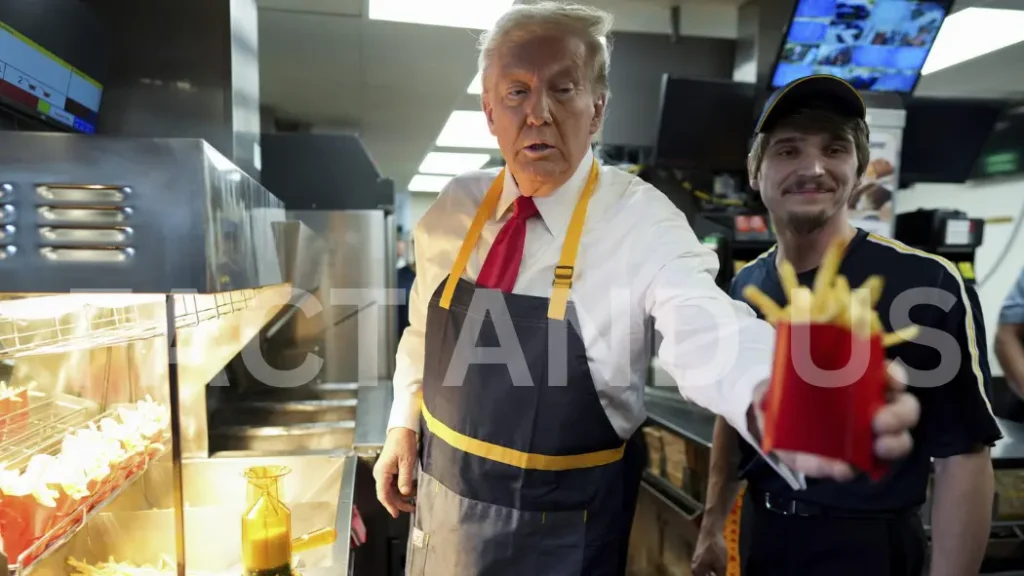When Donald Trump donned an apron at a McDonald’s in Pennsylvania this weekend, he reportedly hoped to reach that vital slice of working-class voters-but he also hoped to make his unsubstantiated claim about Kamala Harris never working at the fast-food chain. The Democrat claims she worked at a franchise in California 40 years ago.
And she talks about it on the campaign trail regularly, an example, she says, of how she has a better understanding of working Americans’ concerns than her billionaire rival. The BBC’s Lily Jamali visited that McDonald’s near San Francisco to find out more the row. In a moment that surprised both his supporters and critics alike, former President Donald Trump was spotted behind the counter at a McDonald’s, serving fries with a smile.

The image quickly turned viral as it sparked curiosity and enough questions. Why is the 45th president of the United States giving out fast food? Here’s what really happened.
Contents
A Gesture of Support for Workers
Trump’s visit to McDonald’s was not only a publicity stunt but a broader campaign to get connected with the common people. Throughout his presidency and even afterward, Trump has played the role of the champion of the working class, admitting to a love affair for fast food chains like McDonald’s. To serve fries was an attempt not only to reemphasize his love for the brand but also his hard-earned connection with blue-collar workers and the service industry.


It is not a secret that working conditions for McDonald’s employees, and many of those who work in the fast food industry at large, are extremely challenging. Trump’s decision to step behind the counter was symbolic, demonstrating solidarity with workers and emphasizing that no job is too small or beneath any one person, even a former president.
Campaign Trail Strategy
As Trump prepares for potentially another presidential run, moments like this serve a double purpose. They help not only remind people of his famous connection to everyday American life but also help reframe his image. Critics often have accused Trump of being out of touch with the common person, considering his billionaire status. Through such activities, which he relates to every average citizen, Trump fights that narrative to portray himself as a person who can really resonate with the commoner.
The visit to McDonald’s also paid off well for Trump’s strength: understanding the power of optics. As simple as serving fries, this viral moment also attracted media attention without him saying a word in a formal speech or press conference.
A Nod to His Fast Food Fanbase
Anyone who followed Trump’s presidency knows that he has a well-documented love for fast food, especially McDonald’s. In fact, during his time in office, he hosted several fast food feasts, notably when serving championship-winning sports teams visiting the White House. For many, McDonald’s represents more than just food—it’s a piece of American culture. Trump’s appearance at one of the chain’s locations plays into that sense of nostalgia and tradition.

At the same time, this moment was as much about reminding people of Trump’s personal preferences as connecting with the broader American public. When he serves fries, he’s not just doing a fun photo op; he’s rebranding himself as the president of the people.
Reaching Out to the Base
Scenes like these stick deeply in the minds of Trump’s core supporters. For a lot of his fans, he is the populist leader who wouldn’t mind rolling his sleeves to reach out to his people directly. Contrasted with other leaders who present an image that is so smug and elitist, Trump showed his people at the McDonald’s outlet why they fell in love with him in the first place: because he is willing to become ordinary like them.

When public trust of politicians is at such low levels, it did not take much for everyone to understand: he still connected with the everyday, average American experience. Only time will tell if this moment in McDonald’s will translate into any success at the ballot box, but it’s clear that Trump knows how to get mileage out of symbolism.
Conclusion
So, why was Trump frying at McDonald’s? It was more than just a quirky headline or a viral video. It was a strategic move to reconnect with the American people, particularly with the working class, reminding them of his populist roots. As he continues to navigate his political future, expect more moments
stay connected with fact and us for more such news
